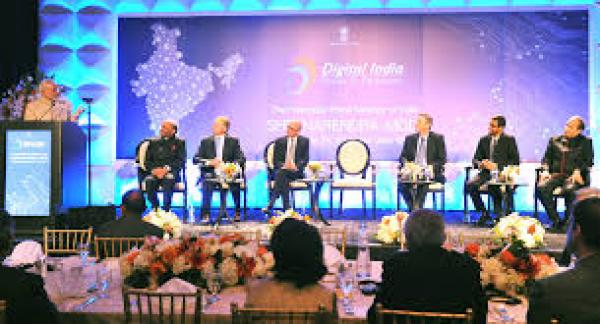Implication of Digital India on Education

Speaking at the SAARC Summit in Nepal last November, Prime Minister Narendra Modi announced that “information technology has removed all barriers to quality education”. With the launch of Digital India, state governments and education practitioners have become increasingly interested in the potential of technology to address low learning levels in primary schools.
Behind Modi’s assertion is a theory that technology can solve fundamental problems with India’s education system. Digital India, Modi’s Rs 1 lakh crore schemes, seeks to provide free broadband Wi-Fi in all schools. But before promoting technology as the next big solution, decision-makers should consider how existing research can inform these investments. A handful of high-quality randomised impact evaluations have provided insights into the potential of technology to improve learning. So far, these evaluations have shown mixed results.
Studies have shown that access to technology in and of itself does not ensure learning. For example, the one laptop per child scheme, adopted by many national governments, was scaled before being rigorously evaluated. A subsequent evaluation of the scheme in Peru found surprising results: Although children accessed and used the computers, the programme had no effect on math or language outcomes. While children became adept at using laptops, usage did not translate into improvements in literacy or numeracy. If raising learning levels is the ultimate aim (rather than merely access and usage), then more thought on programme design is needed.
Researchers found similar results in a study of “computers for education”, a programme run by the Colombian government that installed refurbished computers in schools and trained teachers to use them. Usage only increased fractionally, and the programme had no effect on language or math test scores. This is consistent with broader evidence across sectors suggesting that improving access alone, through computers, textbooks (or even toilets for sanitation), is not always sufficient in driving behaviour change. Similarly, free laptop distribution has been tried in several Indian states over the last four years with little rigorous research on its impact and massive implications for taxpayers. We don’t know if these inputs translated into learning, but based on the global evidence and the way these programmes were designed and implemented, there is reason to be sceptical.
Nevertheless, technology has the potential to improve learning outcomes when well integrated into the learning process. Randomised evaluations conducted by researchers affiliated with the Abdul Latif Jameel Poverty Action Lab have shown large effects on basic literacy and numeracy from carefully designed ICT interventions. An evaluation of a computer-assisted learning programme in Gujarat, developed by Pratham, showed large improvements in student math scores. Students received two hours of instruction per week, during and after school, supported by a volunteer. Computer games not only provided access to technology but also shifted the child’s learning experience by acting as supplementary instruction targeted to the ability level of the child. These findings are part of a suite of studies that show targeting instruction to children’s learning levels is more effective at improving learning outcomes than following a rigid curriculum. In this case, rather than technology being a solution in and of itself, it facilitated students’ ability to learn at their own pace.
Additional studies reinforce the importance of programme design. An evaluation of a computer-assisted math programme showed drastically different results when implemented in two different ways. A supplementary after-school programme for one hour a day increased students’ math scores significantly. However, an in-school pull out programme that replaced the normal curriculum for one hour a day, within a relatively well-functioning network of NGO schools, actually lowered students’ math scores. Decision-makers must not only consider if the programme works, but also what it is replacing.
New education technologies have the potential to facilitate self-paced learning in more sophisticated ways. More rigorous research is needed to better understand how technology can best be utilised, both in and out of schools. Rather than evaluating specific hardware or software products, we should focus on evaluating models of technological enhancement that will remain relevant even after specific technologies become obsolete.
Source: Times of India (online)
The author of this article is Asst. Professor Pioneer Institute of Professional Studies Indore





